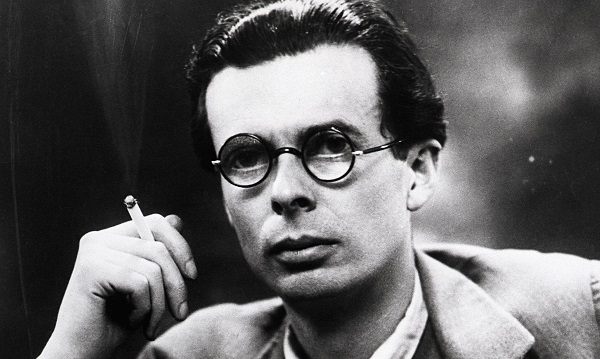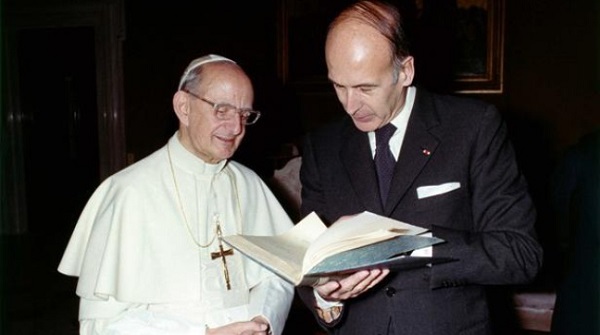The theory that Pope Paul VI was replaced at the Vatican by an imposter is not novel. It is by no means original to this blogger. It is, in fact, somewhat well-attested to over the past four decades. One of the earliest and best-known attestations in North America was made in the late 1970s by Veronica Lueken of Bayside, Queens in New York (here is her Wikipedia entry; here is a website operated by a group of her devotees called St. Michael’s World Apostolate, and here is another called These Last Days Ministries. This blog does not endorse either organization).
Mrs. Lueken claimed to be a Marian visionary, maintaining that she had seen countless apparitions, not only of the Blessed Mother, but many saints and angels as well. In one of her messages, Mrs. Leuken related that the Virgin Mary had appeared to her and informed her that the pope, Paul VI, had been murdered by a satanic cabal in the Vatican. According to Mrs. Lueken, Mary told her the cabal had placed an imposter on the throne of Peter—a communist look-alike who had been worked on by the finest plastic surgeons in the world, sculpted into a remarkable replica. “My child,” said Mary (allegedly) to Mrs. Lueken, “shout this from the rooftops!” The result was that Mrs. Lueken received a swift condemnation from the Diocese of Brooklyn. Her visions and revelations were deemed not credible, and harmful to the faith.
It is the opinion of this writer that the Diocese of Brooklyn was correct. Mrs. Lueken’s visions couldn’t have come from heaven, because heaven does not make errors. And Mrs. Lueken was flatly wrong: Paul VI had not been murdered. He had, it was true, been replaced by an imposter. But he was nevertheless living. He would’ve been able to say, as Mark Twain had quipped, “reports of my death have been greatly exaggerated.” And like Twain’s characters, Tom Sawyer and Huckleberry Finn, the pope had actually watched his own funeral (not from a choir loft, however, but on a squat little portable black-&-white Brionvega television in the Milan apartment of an elderly couple he knew from his tenure as Archbishop there). And at the time of Mrs. Leuken’s revelations, Pope Paul had fully settled in to his secret life in exile. He was being sheltered by a group of Greek Orthodox monks on the isle of Crete, wearing the coarse cassock and skufia of Byzantine monastics, having grown out his beard to a full, bristling, and wild Rasputin length (the Italians are a hirsute race, so within a few years he was quite able to rival his Greek compatriots in their ages-old habit of growing untamed Moses beards). Even the most careful observer would hardly have recognized him there, emerging from his cell in the morning with his head solemnly bowed, joining the slow, shuffling procession of dark robes to the chapel to chant the ancient prayers of the Psalter. (I might be getting ahead of the story with all this. In later posts, I will tell of how Pope Paul initially learned of the plot to murder him, how he managed to escape from the Vatican, and where he journeyed afterwards; the report comes from his personal assistant, Claudio Gagne-Bevilacqua. The salient fact is this, though: at the time of Mrs. Lueken’s revelations, Pope Paul VI was very much alive).
So Mrs. Lueken’s story was only half right. But it’s relevant, for our purposes here, that an obscure housewife in Bayside, Queens was already articulating the idea that the Pope Paul in Rome was not actually the real Pope Paul. What probably happened is that Mrs. Lueken caught a whiff of a rumor which contained a nugget of truth. And rumors were really beginning to make the rounds by the middle of the 1970s. The imposter, whose real name was Alessandro Falchi, was exhibiting catatonic and strange behaviors.
Soon, over the span of several posts, I will provide a more detailed biographical sketch of Alessandro Falchi. Suffice it to say for now that by the time he took up his role as “Pope Paul VI,” he was a walking casualty of a hideously sinful lifestyle. Falchi had always been a libertine: he was a man of rapacious and indiscriminate sexual appetites. In modern parlance, we might label him a “bisexual,” although even that might be too restricting a term. He had relationships with women and men, mostly men, and sometimes even with those woe-begotten persons who exhibit the genitalia of both sexes, called hermaphrodites. Falchi was an ordained Catholic priest, but privately he was an occultist; in the mid-1950s he requested a position in Bombay, India (now known as Mumbai) in order to increase his knowledge of the Sanskrit language and to study the Vedic ritual texts. In a padlocked off-limits room in his rectory, he erected a shrine (candles, altars, flowers, and statues) to the Hindu monkey-god Hanuman, to whom he sacrificed a bowl of ghee every evening. While in Bombay, Falchi fell in love with a hijra prostitute named Saraswati. It is unclear whether Saraswati was a male passing for female, or a hermaphrodite, or something else. Falchi told Gagne-Bevilacqua, “my Saraswati eluded definition.” Fairly repulsed, Gagne-Bevilacqua did not press the issue. What Saraswati did do, however, was to give Falchi the venereal disease syphilis, which slowly began to ravage his once-formidable mind.
After his stint in India, Falchi was laicized (details to come) and ended up in southern California in the 1960s, wearing a casual wardrobe purchased in Bombay: leather sandals, earth-toned trousers, madras shirts, and mala bead necklaces. He fell in with the haute crowd of British expatriate intellectuals living there, including Aldous Huxley and Christopher Isherwood. Most of these men were Indophiles; Falchi managed to ingratiate himself among them with his competence in Hindu religious matters. He impressed Huxley by recounting his dalliance with their late mutual friend, the poet Evan Morgan, but after a while Huxley is reported to have found Falchi distasteful. At the time of Huxley’s death in November of 1963 (the same day JFK was assassinated), the great writer was probably at least glad to be ridding himself of the ex-priest who kept pestering him to collaborate on a literary translation of the Ramayana. Huxley went into the ether—his doors of perception were cleansed; he gazed upon the infinite; and Alessandro Falchi was no longer even a memory.

Aldous Huxley (1894 -1963). British author of Brave New World, Island, The Doors of Perception, and Heaven and Hell.
Falchi stuck around Los Angeles for a few more years, growing ever more indolent and dissolute. He became a fixture at the homosexual soirées hosted by Isherwood and Don Bachardy, and later began experimenting with psychedelic drugs. In 1965, while Pope Paul VI was presiding over the close of the Second Vatican Council in Rome, his future replacement had become quite enamored with LSD. Intemperate use of the lysergic would prove to severely hobble his mind; this, alongside the syphilis, ultimately sealed his fate. By the time he first put on his papal garments in 1972, he was a rather confused and empty-headed old man who often exhibited a blank, dead-eyed gaze. Just as ancient Rome had a deranged syphilitic sitting on the throne during the reign of the emperor Caligula, so too did modern Rome have one in the mid-1970s, seated on the chair of St. Peter in Vatican City. But Falchi had one thing going for him: he looked the part. The plastic surgery procedures had been going on incrementally for over four years. It was precisely his clueless state in life which had rendered him so compliant to his handlers. They had sculpted him very nearly to imposter perfection.
It was his behavior that began to raise hackles. He was passable when celebrating Mass or waving to crowds, or even making brief speeches and giving blessings. But people meeting him in private papal audiences were confounded by his bizarre non sequiturs, his uncomfortable silences, and his inability to make eye contact. Foreign dignitaries trying to discuss serious political situations were met with vapid responses. One of them was the President of France, Valéry Giscard d’Estaing. A young journalist covering their meeting found himself appalled at the pope’s inability to say anything of substance. When the president asked him a detailed question about unrest in Lebanon, the supposed Pope Paul whispered the gnomic reply, “I have not found such faith in all of Israel.” When the President politely said he appreciated the bible reference but desired to talk about the Lebanese particulars, the pope cut him off. “It’s not just a reference,” he said softly. “I am Jesus the Christ. I am the Greatest I Am. As the Lord God said to Moses, ‘I AM THAT I AM.’” The journalist did not scruple to hide his amazement. At a press conference afterwards, he asked Giscard d’Estaing if he thought the man he met with was really the pope. (The president sighed and rolled his eyes, dismissing the question as “absurd”—but not without the hint of an amused smile at the suggestion.)

Valéry Giscard d’Estaing meeting with Alessandro Falchi in December 1975. The book is the Vatican library’s copy of a rare 1922 edition of the medieval French saga The Song of Roland, illustrated by the French artist Edmund Dulac. (“I shall never love you,” Roland cried, “for you are falsehood and evil pride.” Stanza CXXXI).
Other audiences passed in similar fashion. Most people attempted to put a charitable spin on it. The pope was getting old; it might be the onset of dementia. The pope was a busy man; his schedule has probably worn him out. The pope was having an “off day”; he hadn’t gotten enough sleep—meeting dozens of people at meeting after meeting was bound to make anyone confused. But for some people, the oddball behavior was too much to ignore. Monsignor Robert Flynn, an American priest from the Archdiocese of Newark, recalled personally meeting the pope twice: first during his papal visit to New York in 1965, and later, at the Vatican, in 1973. He did not mince words. “Something very diabolical is going on here,” he told a confrère during his trip to Rome. “There is no way that man is the same person I met with eight years ago. There is simply no way.” Uninvited ears might’ve been listening in, because Msgr. Flynn was the victim of several violent home invasions in his rectory during the remainder of his priestly career. In one of these incidents, an attacker broke both of his arms and four of his ribs with an aluminum baseball bat. Police informed him the assailant would face attempted murder charges if found (though he never was). On one hand, this might be expected: it was Newark, New Jersey. On the other hand, there is this: upon his retirement, Msgr. Flynn went into hiding.
Doubtless it was a “something is amiss with the pope” rumor similar to the ones mentioned above that Mrs. Lueken became privy to, and she inserted it into one of her fraudulent revelations. The fact remains that her full account was wrong. The pope had not been murdered. Either the story had gotten twisted and more elaborate as it travelled—as the original message gets garbled in the children’s game of “telephone”—or Mrs. Lueken added the murder as part of her own lurid whimsy. If she did, it was almost prescient, for the original plan, indeed, was to have the pope murdered. When he eluded the designs of his would-be assassins, they simply progressed to the next stage and proceeded with propping up his replacement double. The details of all this will be provided later, so as to keep things chronological. And with that, we can finally take our leave of Frau Lueken—a phony visionary, for sure, but nonetheless a recorded testimony to the imposter claim, and very early on. Let us call her Exhibit A.
Danke, Veronika.